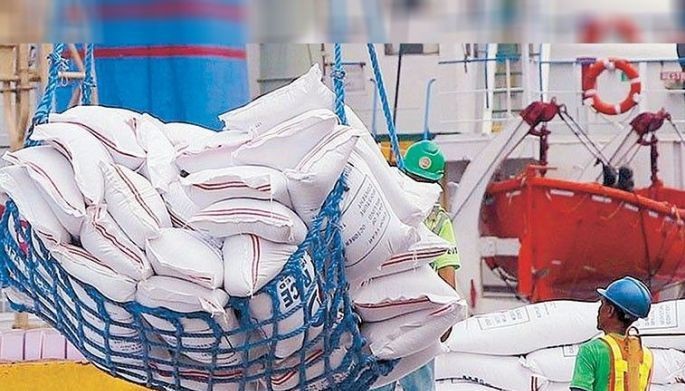MANILA, Philippines — The Philippines remains the world’s largest rice importer as imports reached a new record high of nearly 3.9 million metric tons, latest Bureau of Plant Industry (BPI) data showed.
The country’s rice imports as of Nov. 7 reached an all-time high of 3.89 million MT, eclipsing the previous record of 3.83 million MT in 2022.
The latest import volume has also surpassed the 3.61 million MT full-year rice imports last year by at least eight percent, based on BPI data.
The bulk or about 78 percent of the total imported rice came from Vietnam, which has been the country’s top supplier of the grain even before and especially after Republic Act 11203 deregulated the country’s rice industry.
The country imported 3.04 million MT of rice from Vietnam – about two percent higher than the 2.99 million MT recorded import volume from that country for the entire 2023.
Vietnam was followed by Thailand, which exported 497,465 MT to the Philippines; Pakistan, 178,179 MT, and Myanmar, 143,364 MT. Completing the top five rice import sources was India, which provided 22,108 MT.
BLY Agri Venture Trading led the 154 eligible traders and importers that imported rice this year with 280,909 MT, followed by Atara Marketing Inc. with 204,530 MT and Orison Free Enterprise Inc. with 187,609 MT.
Experts have attributed the higher rice imports this year to the need to beef up domestic stocks amid earlier concerns over the ill effects of a prolonged dry spell caused by El Niño on local farms.
Beyond climatic concerns, government officials were worried about rising retail rice prices, prompting President Marcos to exercise his power to modify tariffs, reducing the rate on rice to a historic low of 15 percent from 35 percent.
Government officials and experts noted that the reduction of tariffs would encourage the entry of more affordable foreign rice stocks that would augment domestic supplies and prevent further spikes in retail prices.
However, retail prices of imported rice still remain more expensive than locally produced stocks. Imported commercial rice in Metro Manila ranges from P42 per kilo to P63 per kilo while local commercial rice fetches between P40 per kilo and P64 per kilo, according to the Department of Agriculture price monitoring report.
In a related development, Pakistan wants to increase its share in the Philippines’ rice market by forging a bilateral memorandum of agreement with the government.
Pakistani Ambassador Imtiaz Ahmad Kazi said the South Asian country stands ready to expand its rice exports to the country to as much as one million MT.
“We want to increase that share, provided we can also provide a stable, good supply of rice. And that depends on mutual conditions for each other, which means that the Philippines should guarantee us that they want this much rice every year.
Under a MOA, Kazi said Pakistan would have a guarantee of the volume that would enter the country in a given year.
The idea of forging a MOA between Manila and Islamabad came up last year during initial talks between the foreign ministers of the two countries, Kazi explained.
Furthermore, the diplomat pointed out that their rice exporters also seek stability and predictability in the Philippines’ rice tariff regime.
He noted that the country’s rice tariff rate has been changing in the past years from a high of 50 percent to 35 percent and today at 15 percent.
“So our exporter wants to have stability and certainty about the quantity as well as tariff. Once it is done, we have the option to convert our sugarcane and cotton fields back to rice, just especially for the Philippines,” he said.
Kazi said that Pakistan is the world’s largest rice exporter with more than two-thirds of its more than 10 million MT production being shipped to other countries.


